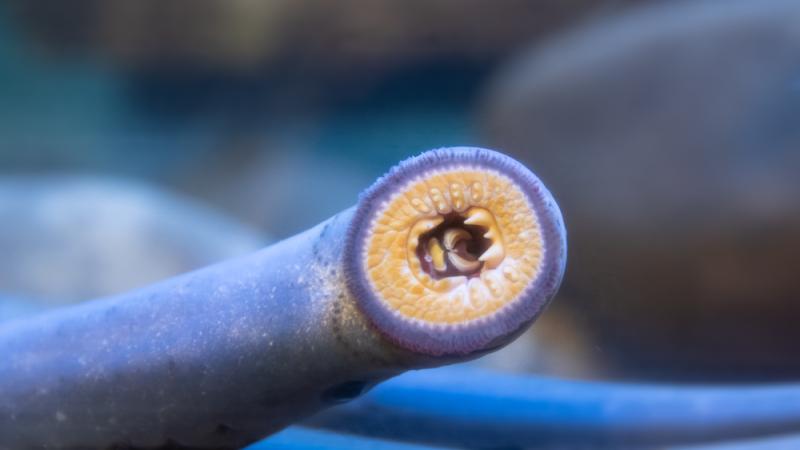The 'cuteness' returns: Zoo welcomes back Pacific lamprey

The ancient, eel-like fish have a temporary home in the zoo’s Great Northwest area
Pacific lamprey returned to the Oregon Zoo this month, offering guests another chance to see one of the Pacific Northwest’s oldest — if not cutest — species. Predating dinosaurs and even trees, this 400-million-year-old fish plays an important part in the region’s history and culture.
“We’re thrilled to welcome lamprey back,” said Sara Morgan, senior keeper for the zoo’s northwest area. “It’s a great way for people to see this ancient and unique species up close and learn more about their history.”
Visitors can see the lamprey in the Cascade stream and pond section of the Great Northwest area.
The Pacific lamprey, an eel-like fish with a jawless mouth and no scales, has survived three ice ages and five mass extinctions, but populations have declined in the past 75 years due to habitat loss, climate change and food scarcity. They are now considered a species of concern by the U.S. Fish & Wildlife Service as well as the Oregon and Washington state fish and wildlife agencies.
At the Oregon Zoo, lamprey can often be seen suctioned onto the glass of their habitat windows, showcasing sucker-like mouths and concentric rings of sharp yellow teeth — all part of the fish’s remarkable nontraditional “cuteness,” according to keepers.
“When you say the word ‘cute,’ lamprey are not what most people might picture,” Morgan said. “But once you get to know them, they have a lot of charm. It’s been fun introducing folks to a different kind of adorable animal.”
The lamprey came to the zoo from the Confederated Tribes of the Umatilla Indian Reservation as part of a tribal-led effort that collects lamprey returning to fresh water below the three lowest dams on the Columbia River and moves them above the dams to areas where they used to live, allowing the industrious fish to rebuild its own habitat. Other lamprey recovery efforts include installing passage structures, removing dams to ease passage, and restoring damaged streams to help lamprey spawn and rear young.
The zoo’s Pacific lamprey habitat was made possible by the U.S. Fish & Wildlife Service. The lamprey stay at the zoo through the winter, and are transported to tributaries of the upper Columbia and Snake rivers once they’re ready to spawn.
More News

Rescued cougar cubs are venturing out
A pair of orphaned cougar cubs, rescued and brought to the zoo by Washington Department of Fish and Wildlife staff in November, have begun exploring their outdoor habitat.April 17, 2025

Zoo seeks pika watchers for summer season
The Oregon Zoo is recruiting volunteers for Cascades Pika Watch.April 15, 2025

Zoo convenes action for imperiled elephants
Sabah government representatives joined conservation NGOs, local communities, palm oil producers, and tourism operators this week in the fight to save the world’s smallest elephants from extinction.April 11, 2025

